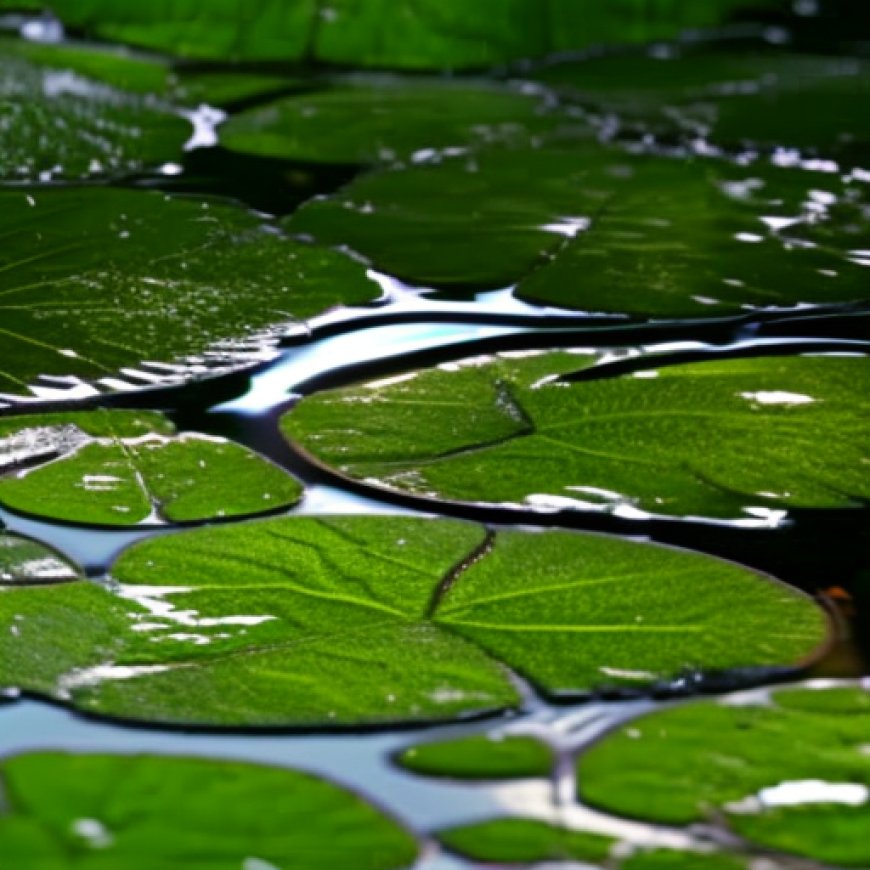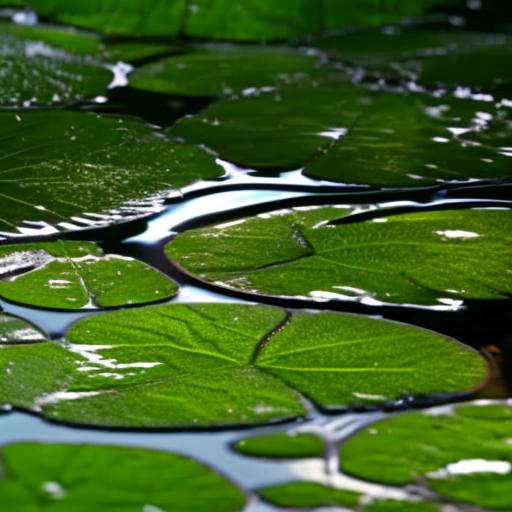Mapping chemical footprints in European streams
Mapping chemical footprints in European streams EurekAlert


Mapping Chemical Footprints of Organic Micropollutants in European Streams
Introduction
Many pesticides, industrial chemicals, and pharmaceuticals, along with their degradation products, are being found in streams and rivers. In order to assess the occurrence and concentration of these chemicals in European watercourses, a team of environmental chemists at the UFZ conducted a study. The researchers analyzed 445 samples from 22 rivers, detecting 504 out of 610 chemicals. The study aimed to shed light on the presence and potential effects of these substances on freshwater ecosystems.
Findings
The researchers found a wide range of chemicals in the samples, including pesticides, pharmaceuticals, surfactants, plastic additives, and corrosion inhibitors. In fact, up to 50 chemical substances were detected in 40% of the samples, and 51-100 chemicals were found in an additional 41% of the samples. The highest number of substances (241 chemicals) was detected in a water sample taken from the Danube. Among the most frequently detected substances were N-acetyl-4-aminoantpyrine, a degradation product of the analgesic metamizole, and the anticonvulsant carbamazepine. The researchers also found insecticides such as diazinon and fipronil, which are known to be harmful to aquatic invertebrates.
Chemical Footprint and Water Quality
The researchers used the concept of the chemical footprint to assess the potential impact of chemical mixtures on water quality and the survival of aquatic organisms. By relating the concentration of a chemical to its expected effect, the researchers calculated the chemical footprint for each site. The results showed that the scientific limit values for the chemicals detected were exceeded in 74% of the samples. Crustaceans were found to be particularly at risk, with 15% of the surveyed sites showing an acute risk to their survival.
Sustainable Development Goals (SDGs)
- Goal 6: Clean Water and Sanitation – The presence of a large number of chemicals in European waters poses a threat to water quality and the survival of aquatic organisms.
- Goal 14: Life Below Water – The study highlights the negative effects of chemical pollution on freshwater ecosystems and the need for improved monitoring and regulation.
- Goal 15: Life on Land – The findings emphasize the importance of protecting and preserving biodiversity in watercourses, as many chemicals detected in the samples pose risks to aquatic organisms.
Conclusion
The study reveals that despite efforts to improve water quality, there are still significant levels of chemicals in European waters. The researchers emphasize the need to include more chemicals in water monitoring programs and to focus on the effects of chemical mixtures. They also highlight the importance of further research to better understand the impacts of these chemicals on organisms in watercourses.
SDGs, Targets, and Indicators Analysis
1. Which SDGs are addressed or connected to the issues highlighted in the article?
- SDG 6: Clean Water and Sanitation
- SDG 14: Life Below Water
- SDG 15: Life on Land
The article discusses the presence of various chemicals in European watercourses, which directly relates to the goals of ensuring clean water and protecting life below water and on land.
2. What specific targets under those SDGs can be identified based on the article’s content?
- SDG 6.3: By 2030, improve water quality by reducing pollution, eliminating dumping, and minimizing release of hazardous chemicals and materials.
- SDG 14.1: By 2025, prevent and significantly reduce marine pollution of all kinds, particularly from land-based activities, including marine debris and nutrient pollution.
- SDG 15.1: By 2020, ensure the conservation, restoration, and sustainable use of terrestrial and inland freshwater ecosystems and their services.
The article highlights the presence of various chemicals in European watercourses, indicating a need to reduce pollution and minimize the release of hazardous chemicals to improve water quality. It also emphasizes the importance of preventing marine pollution and ensuring the conservation and sustainable use of freshwater ecosystems.
3. Are there any indicators mentioned or implied in the article that can be used to measure progress towards the identified targets?
Yes, there are indicators mentioned in the article that can be used to measure progress towards the identified targets:
- Presence and concentration of specific chemicals in European watercourses
- Number of chemical substances detected per sampling point
- Number of chemicals detected simultaneously at a sampling site
- Number of samples with a certain number of chemical substances detected
- Exceedance of scientific limit values for chemical concentrations
These indicators provide measurable data on the presence and impact of chemicals in watercourses, which can be used to assess progress towards reducing pollution and improving water quality.
SDGs, Targets, and Indicators Table
| SDGs | Targets | Indicators |
|---|---|---|
| SDG 6: Clean Water and Sanitation | Target 6.3: By 2030, improve water quality by reducing pollution, eliminating dumping, and minimizing release of hazardous chemicals and materials. | – Presence and concentration of specific chemicals in European watercourses – Number of chemical substances detected per sampling point – Number of chemicals detected simultaneously at a sampling site – Number of samples with a certain number of chemical substances detected – Exceedance of scientific limit values for chemical concentrations |
| SDG 14: Life Below Water | Target 14.1: By 2025, prevent and significantly reduce marine pollution of all kinds, particularly from land-based activities, including marine debris and nutrient pollution. | – Presence and concentration of specific chemicals in European watercourses – Number of chemical substances detected per sampling point – Number of chemicals detected simultaneously at a sampling site – Number of samples with a certain number of chemical substances detected – Exceedance of scientific limit values for chemical concentrations |
| SDG 15: Life on Land | Target 15.1: By 2020, ensure the conservation, restoration, and sustainable use of terrestrial and inland freshwater ecosystems and their services. | – Presence and concentration of specific chemicals in European watercourses – Number of chemical substances detected per sampling point – Number of chemicals detected simultaneously at a sampling site – Number of samples with a certain number of chemical substances detected – Exceedance of scientific limit values for chemical concentrations |
Behold! This splendid article springs forth from the wellspring of knowledge, shaped by a wondrous proprietary AI technology that delved into a vast ocean of data, illuminating the path towards the Sustainable Development Goals. Remember that all rights are reserved by SDG Investors LLC, empowering us to champion progress together.
Source: eurekalert.org

Join us, as fellow seekers of change, on a transformative journey at https://sdgtalks.ai/welcome, where you can become a member and actively contribute to shaping a brighter future.







